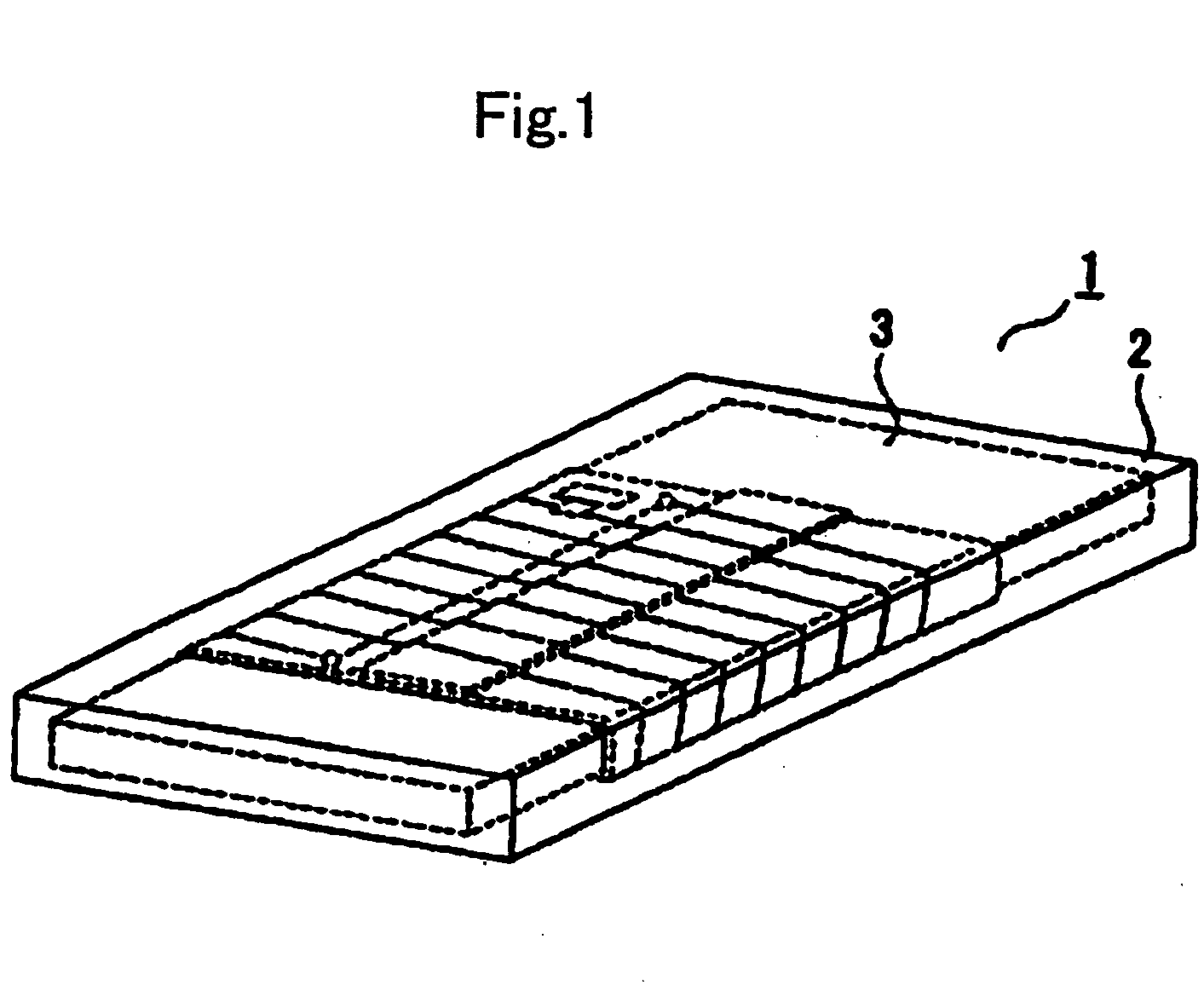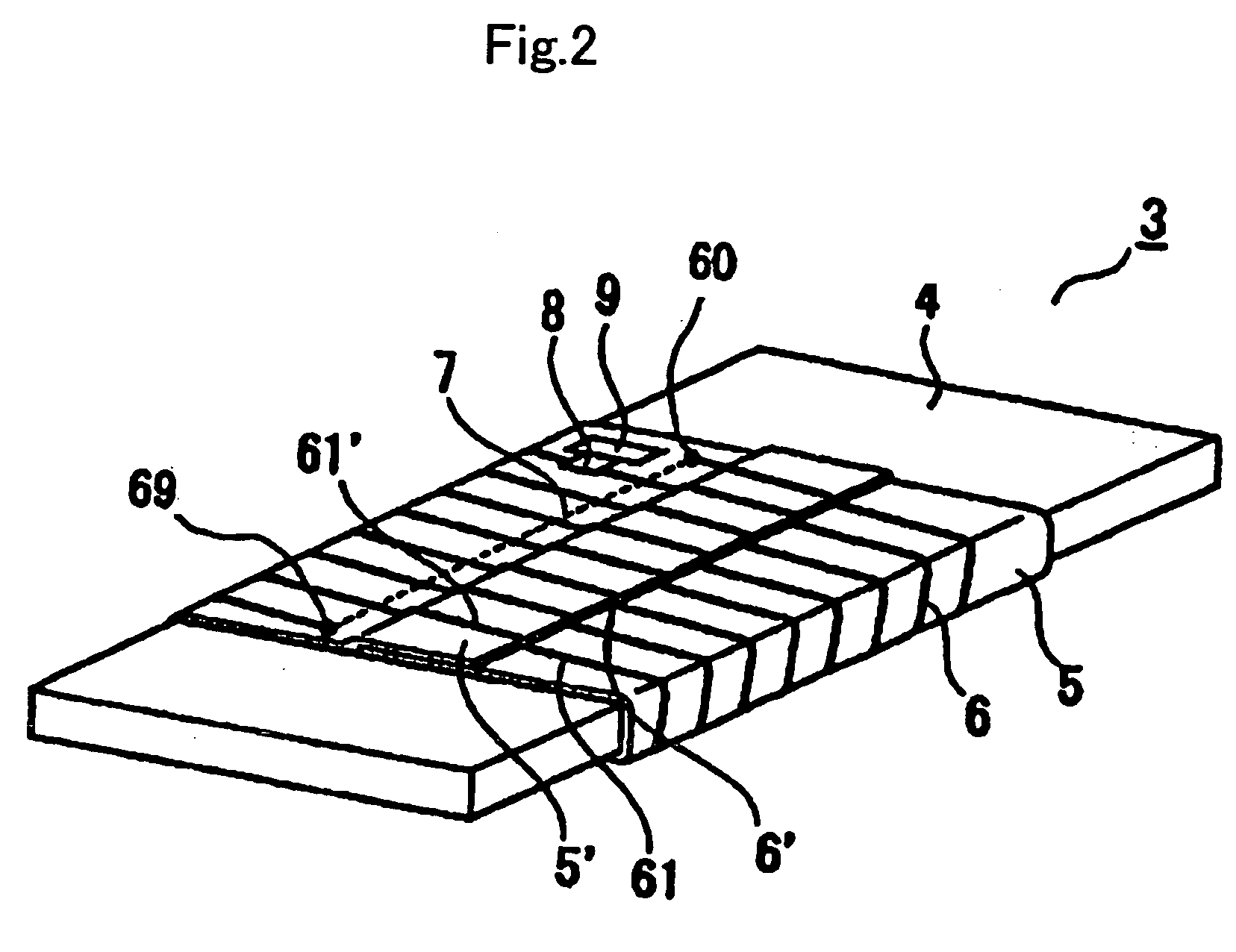RFID tag and its manufacturing method
a technology of rfid tags and manufacturing methods, applied in the direction of loop antennas with ferromagnetic cores, burglar alarm mechanical actuation, instruments, etc., can solve the problems of reducing cost, limiting the increase of manufacturing efficiency, and limiting the efficiency of manufacturing, so as to reduce the cost and size, and reduce the effect of fluctuations
- Summary
- Abstract
- Description
- Claims
- Application Information
AI Technical Summary
Benefits of technology
Problems solved by technology
Method used
Image
Examples
first embodiment
[0067]FIG. 2 is a view showing a structure of the transmitter / receiver 3 of the RFID tag 1 according to the As shown in FIG. 2, the transmitter / receiver 3 has the structure such that an FPC 5 is wound around a magnetic core 4 such as ferrite, ferrite-contained resin, and amorphous sheet. In addition, as the magnetic core 4, it is preferable to use a material having the flexibility such as the ferrite-contained resin and amorphous sheet to prevent the member 4 from cracking.
[0068] The FPC 5 is, for example, obtained by forming a resin such as PET, PI, PEN and liquid crystal polymer into a sheet with a thickness of about 30 μm. Linear conductor patterns 6 and capacitor 9 are formed on one side of the FPC 5, and to the linear conductor pattern 6 is connected an IC 8 which is bonded on the FPC 5 with an epoxy based adhesive or the like. Further, on the other side of the FPC 5 is formed a crossover pattern 7 that is connected to end portions 60 and 69 of linear conductor patterns 6 whic...
second embodiment
[0088] As described later, the shield conductor pattern 20 is not limited to the shape as shown in FIG. 12, and may be formed in various shapes. The second embodiment is characterized in that the shield conductor pattern 20 is formed on the side (back side) different from the side of the FPC 15 on which the linear conductor patterns 16 are formed. As described above, since the shield conductor pattern 20 is provided to reduce effects exerted on the coil-shaped antenna when the external attachment-target object approaches, it is necessary not to provide electrical connection between the linear conductor patterns 16, crossover pattern 17, IC 18 and capacitor 19 constituting the coil-shaped antenna and the shield conductor pattern 20.
[0089]FIG. 12 shows a cross sectional view of the structure of the transmitter / receiver 13 with the FPC 15 as shown in FIG. 11 wound around the magnetic core 14. In FIG. 12, the magnetic core 14 is disposed in the center, the linear conductor pattern 16 fo...
PUM
| Property | Measurement | Unit |
|---|---|---|
| thickness | aaaaa | aaaaa |
| magnetic | aaaaa | aaaaa |
| electrically | aaaaa | aaaaa |
Abstract
Description
Claims
Application Information
 Login to View More
Login to View More - R&D
- Intellectual Property
- Life Sciences
- Materials
- Tech Scout
- Unparalleled Data Quality
- Higher Quality Content
- 60% Fewer Hallucinations
Browse by: Latest US Patents, China's latest patents, Technical Efficacy Thesaurus, Application Domain, Technology Topic, Popular Technical Reports.
© 2025 PatSnap. All rights reserved.Legal|Privacy policy|Modern Slavery Act Transparency Statement|Sitemap|About US| Contact US: help@patsnap.com



